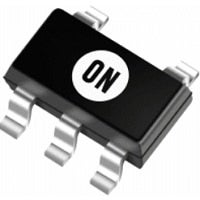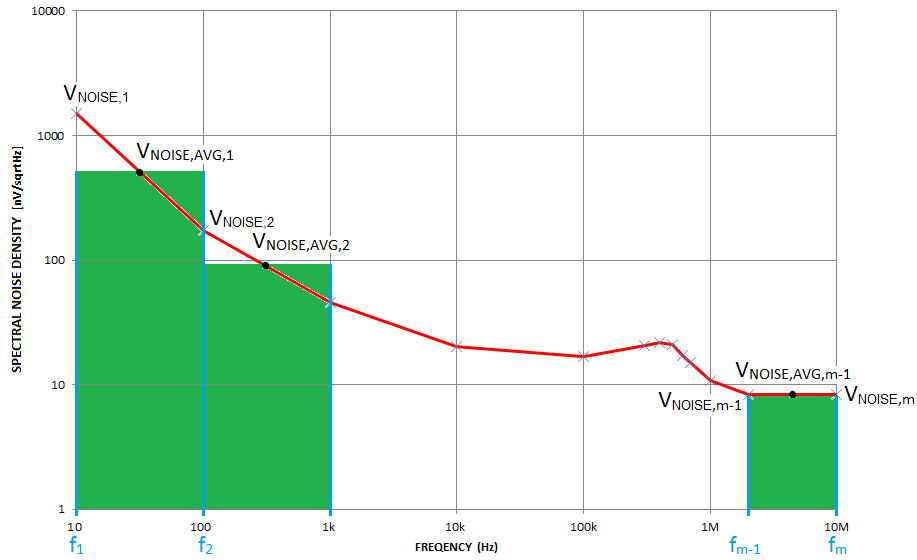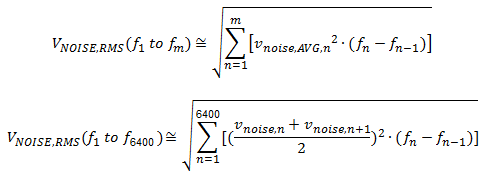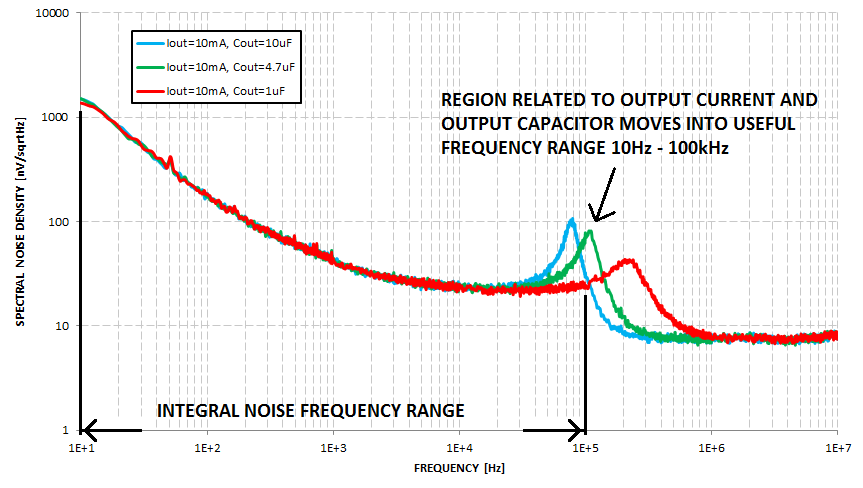Previously in our blog, "What is LDO Noise? Part I" we discussed what noise means, how it is specified and discussed what Low Dropout Regulator's ON Semiconductor offers with ultra-low noise. Today, we will go further into detail about what integral noise means.
Integral noise value is derived from the integral of the spectral noise density function. However, it is too complicated to express any curve by function and integrate it. It is easier to divide the measured curve in small parts. If the frequency difference fn - fn-1 of each part goes to 0, then the sum of all contributions is equal to the integral of the function.
In a real measurement achieving a zero difference fn - fn-1 is not possible, but it is possible to make it close to zero. Spectral noise density measurement has many points which enables us to achieve good accuracy integral noise and detect oscillation peaks. In our case, we have 6,400 points for a frequency range of 10 Hz – 100 kHz. The spectral noise density curve is interpolated by 6,399 intervals and expressed as VNOISE,AVG,n.
The picture below shows spectral noise density of the NCP110 LDO Regulator. If we insert the measured values of the NCP110 LDO Regulator into the last equation, we will get the results of integral noise as shown in the table below. Although the Spectral Noise Density curve moves to a lower frequency because of the higher value of COUT the integral noise increases. Why does this happen? As the picture below demonstrates, you can see it is because the peak related to IOUT and COUT moves to the range of 10 Hz – 100 kHz in which integral noise is calculated.
Why not choose a high value of output capacitor for some LDOs? As you can see the peak, related to output current and output capacitor, grows and moves into the useful freqency range 10Hz – 100kHz when an output capacitor value goes higher and the output current goes lower.
A high value of output capacitor, for example 10uF, improves transient response. Better transient response might be a reason for using a of high value output capacitor. In this example NCP110 has ringing (more than 1 undershoot) and longer settling time to a transient event when using a higher output capcitor, but it still stable. The ringing causes the peak to increase and the integral noise also increase as shown in the table below. The NCP110 LDO Regulator is designed for a lower output capacitor value of 1uF and adding the additional capacitance improves transient response but impacts the system noise performance.
Integral noise is way of expressing how much noise an LDO makes in a specific frequency range. Understanding how this noise is measured and the impact of system level design selections are important when designing a clean power supply. Stay tuned for the blog on Power Supply Rejection Ratio (PSRR) where we will discuss how this is measured and the impacts on system level design. In the meantime check out our NCP110 datasheet for more information on today's topic.





